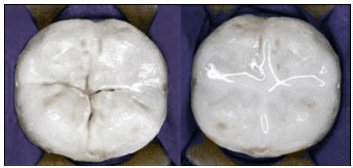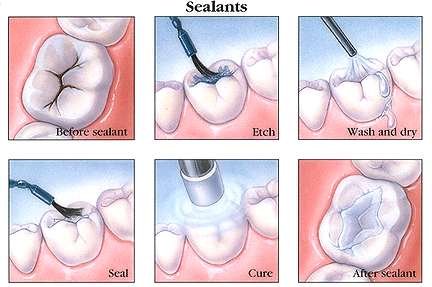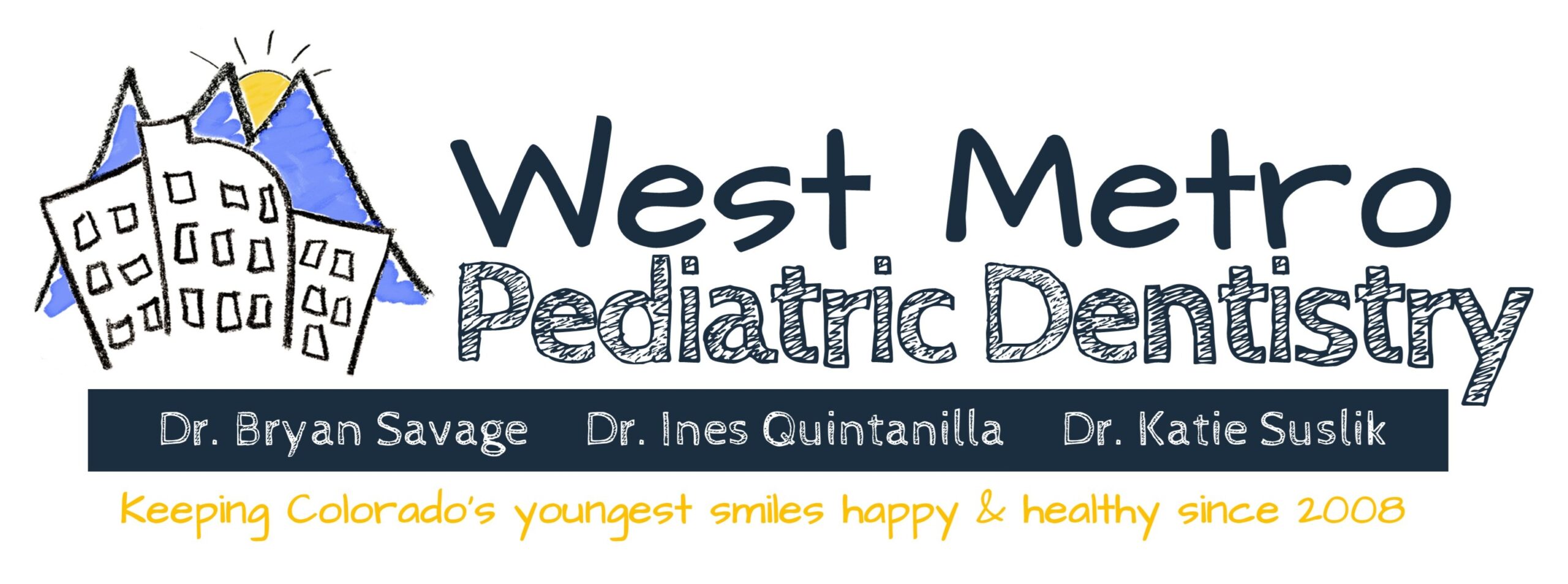Dental Sealants for Your Child
What are dental sealants?
Dental sealants act as a barrier, protecting the teeth against decay-causing bacteria.

A sealant is a plastic material that is usually applied to the chewing surfaces of the back teeth—premolars and molars. This plastic resin bonds into the depressions and grooves (pits and fissures) of the chewing surfaces of back teeth. The sealant acts as a barrier, protecting enamel from plaque and acids.
Thorough brushing and flossing help remove food particles and plaque from smooth surfaces of teeth. But toothbrush bristles cannot reach all the way into the depressions and grooves to extract food and plaque. Sealants protect these vulnerable areas by “sealing out” plaque and food.
When should my child get dental sealants?
We recommend sealants for children as soon as all four of their first permanent molars are fully erupted, usually between 5-7 years of age. When the second permanent molars erupt, these can be sealed as well.
How are sealants applied?
Here is the process, step-by-step:

How do we care for my child’s sealants?
Dental sealants should have a life span of approximately 3 years. To help your child’s dental sealants stay in place, make sure your child does not chew on anything hard, like ice or hard candy. We will check the dental sealants at your child’s regular 6-month dental checkups, and we can touch up sealants when needed. After 3 years, they may need to be replaced.
What is the success rate of sealants?
According to the Comprehensive Review of Pediatric Dentistry (September 7, 2012), after 4.5 years the sealed permanent molar teeth of children ages 5-10 had caries reductions in over 50% of occlusal surfaces compared to non-sealed teeth; caries reductions ranged from 86% at 12 months to 57% at 48-54 months.
Do dental sealants contain BPA?
Ours do not! Some concern exists in regards to the potential of trace amounts of Bisphenol- A dimethacyalate (BPA) being present in dental sealants. Our practice currently uses Ultraseal XT, a sealant produced by Ultradent. The following is a statement from Ultradent regarding this topic:
“Ultradent does not, nor do we plan to ever use, Bisphenol-A dimethacryalate in any of our resin products including our bis-GMA based pit and fissure sealant. Bis GMA is a material widely used by many dental manufacturers since the 1960s. And, while less than pure bis GMA can contain trace quantities of Bisphenol-A, we work with a quality bis-GMA supplier who assures us that there isn’t even a measureable trace of Bisphenol-A impurity. In order to provide additional assurance, we test our base GMA material with a quality outside laboratory.”
